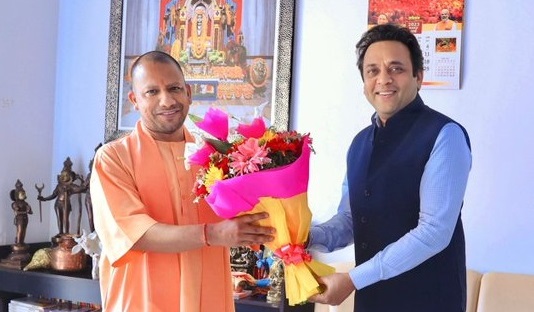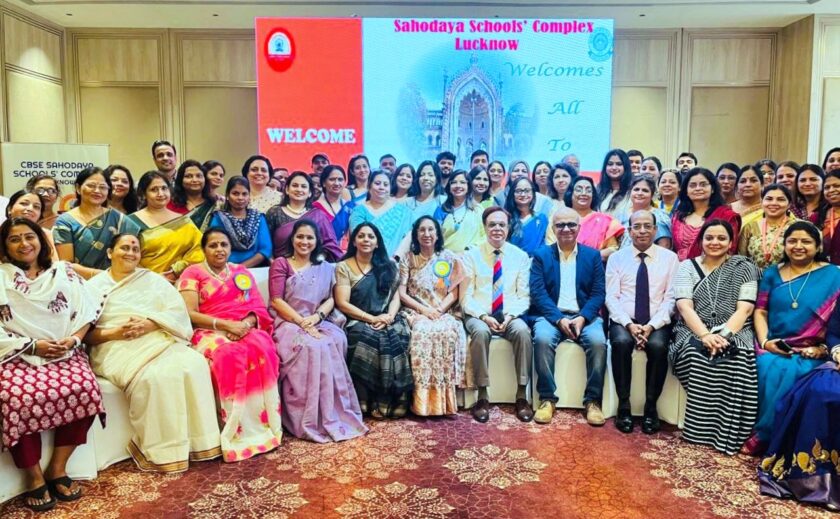Expert Insights on Gold as an Investment: Trends, Sentiments & Value
Lucknow: Gold in India is not merely a precious metal; it is an essential part of the cultural heritage that binds families together. From intricate jewellery worn at weddings to gleaming coins bought during festivals, gold holds a place of honor in every Indian household. The significance of gold goes beyond its commodity value, encompassing emotional ties, legacy, and financial security. For generations, gold has been passed down as a symbol of prosperity, status, and divine blessings. As a result, it is deeply embedded in the cultural and economic fabric of Indian life.
Ankur Anand, Director at Harsahaimal Shiamalal Jewellers (HSJ), provides a deep insight into gold’s cultural importance: “Gold isn’t just something you buy. It’s something you believe in, something that represents your family’s values and history. It’s part of the stories we tell about where we’ve come from.”

Gold has always been viewed as a valuable asset, but in times of economic uncertainty, it has gained even more prominence. The global economic landscape has significantly influenced gold prices, with trade tensions, stock market fluctuations, and inflation driving demand. Trade uncertainties, particularly between India and the United States, have caused volatility in gold prices. Domestically, instability in stock markets often leads investors to seek refuge in gold, viewing it as a safe haven during turbulent times.
Gold’s resilience in volatile economic conditions is one of the primary reasons it remains a popular investment option. In times of geopolitical unrest or financial instability, such as inflation and fluctuating interest rates, investors often turn to gold for its long-standing value retention. As Mr. Ankur Anand puts it, “Gold’s role in financial planning has changed. It’s no longer just something you stash away. With the rise of gold exchange-traded funds (ETFs) and Sovereign Gold Bonds (SGBs), people now look at it as a financial product that complements their overall portfolio. It’s not just an ornament; it’s part of a well-rounded financial strategy.”


While older generations continue to view gold as a valuable heirloom to be passed down, millennials and Gen Z are influencing a shift in buying patterns. These younger buyers are less inclined to invest in heavy traditional jewellery pieces and instead prefer lightweight, everyday wear. However, they also emphasize sustainability, transparency, and ethical sourcing, which are now crucial factors influencing their purchase decisions.
Festivals such as Akshaya Tritiya, Dhanteras, and Diwali continue to be peak seasons for purchasing gold. These occasions hold cultural significance, as they are seen as the best times to acquire gold, marking important milestones and new beginnings. Weddings, too, drive a large portion of gold demand, with gold being an integral part of wedding rituals—both as a gift and as a status symbol. It is viewed not just as material wealth but as a legacy passed on through generations, creating an emotional bond that goes beyond its monetary value.
Gold’s versatility ensures it remains relevant even in modern times. Whether it is worn as jewellery, bought as investment bars, or held through financial instruments like gold bonds, its intrinsic value remains unchanged. Gold’s timeless appeal is a testament to its ability to evolve with changing times while still preserving its cultural essence.
The continued importance of gold in India is clear. It remains a pillar of both tradition and financial security. As an investment, it not only offers a safe haven during uncertain times but also preserves its significance as a cultural symbol that transcends generations. From ancient heirlooms to modern financial products, gold’s enduring charm and value make it an essential part of Indian society, continually evolving while retaining its intrinsic worth.





